Google’s responsive search ads received a makeover that could revolutionize the platform’s A/B testing and dramatically reduce advertisers’ workload.
At a glance, the new ad type will allow advertisers to create search ads with more text and automatically test different variations so that Google searchers see the best performing ad combination.
In this article, you’ll learn the ad specs as well as:
- What responsive search ads are
- How they’re different from traditional search ads
- Responsive search ad disadvantages
- Best practices
- Device availability
- When you can use them and how much they cost
What are responsive search ads?
The responsive search ad is Google’s latest text ad type. As of this article’s publishing (August 2018), the ad type is in beta testing, so it may not be available to all advertisers yet.
One of the unique features is its use of machine learning to determine your most effective ad combinations. Google does this by automatically testing different variations of your ad using the group of headlines and descriptions that you set.
The graphic below illustrates how Google chooses from your “pool” of headlines and descriptions to generate the final ad:
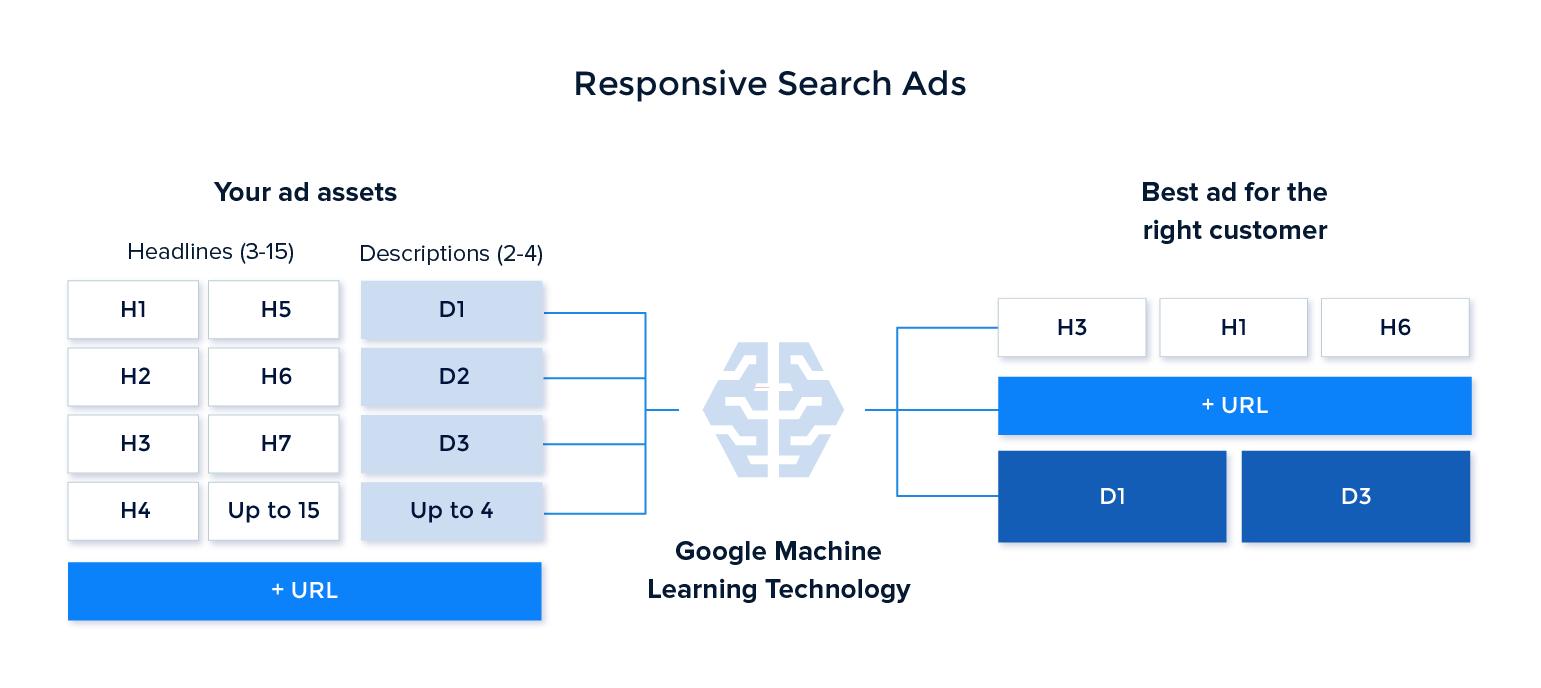
This is the setup part in Google Ads. Using the editor, you can add up to 15 headlines and four descriptions. Each headline will be separated by the “|” symbol. Descriptions are separated by a period:
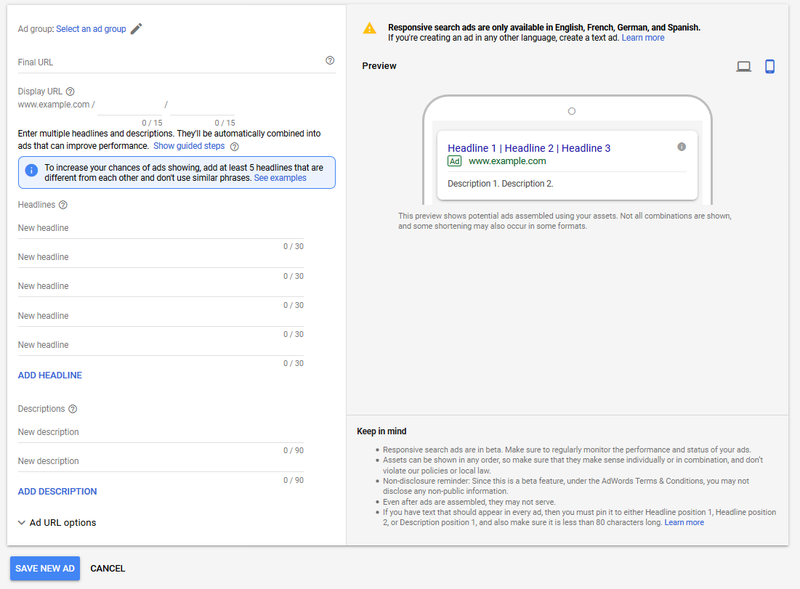
On mobile, this is how a live ad appears:
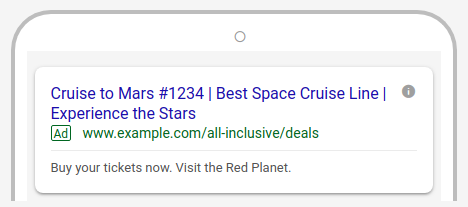
It is worth mentioning that Google won’t always show all three headlines at once because it depends on the device the searcher is using. A smaller screen size (like a mobile device) may only see two headlines. However, your responsive ads will always show at least two headlines and one description.
To sum up, the key takeaways:
- You can write up to 15 headlines and 4 unique descriptions
- The descriptions and headlines can lead to 43,680 versions of the same ad
- Automatic testing of different ad variations is done for free via Google’s machine learning
- Automatic selection of the ad is tailored to the user’s browsing history, device, and other behaviors
Your experience with Google Ads will be drastically better because you now have the option for nearly endless testing opportunities without any additional effort.
Lastly, there won’t be one ad version that “wins.” Rather, there will be several high performing ads selected for a number of buyer personas based on browsing history, online behaviors, etc.
How are the ads different than traditional search ads?
Before the release of Google’s responsive ads, expanded text ads were the only choice for text-based ads (standard text ads were discontinued in January 2017).
With the new ad type, you can now select either expanded text ads or responsive ads (if they are enabled on your account). Here’s how the two ad types differ at a glance:
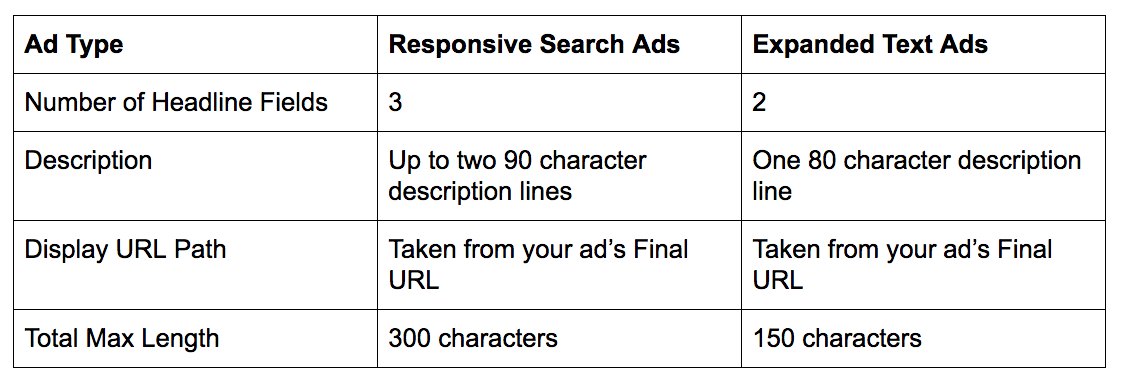
The most notable change, however, is that testing is done automatically with Google responsive ads. Advertisers will no longer have to test ads themselves and keep track of conversion rates.
Responsive search ad disadvantages
Many advertisers are expecting Googe’s automatic delivery of different ad combinations to be the death of A/B testing, but before you read the will, keep in mind:
- Google doesn’t offer in-depth reporting on the testing results, and there’s no transparency with the testing methods used.
- Many advertisers might not trust automation in lieu of their own advertising strategies that they’ve been using for years.
A/B testing is still one of the most proven and reliable CRO strategies, so it is recommended you not abandon it and depend on responsive search ads (if available to you).
Google responsive ad best practices
Google details a few helpful tips and guidelines when it comes to creating effective responsive search ads. Specifically, they recommend you:
- Create at least five unique headlines that do not repeat the same or similar phrases. At least eight to ten headlines is best. The more headlines you create, the more options Google has to choose from when showing your ad to a searcher.
- Include a keyword in at least two headlines. However, make sure that at least three of your headlines don’t include your target keyword(s). Alternatively, Google recommends featuring a service or product benefit, how you solve a potential problem a customer may have, or highlighting benefits such as free shipping, exceptional support, etc.
- Create headlines of different lengths. Do not use the entire character count in each headline.
- At a minimum, add at least two unique descriptions.
To demonstrate, Google provides a few examples. The first shows the right way to use the ad type when targeting “women’s shoes.” Notice that multiple headlines omit the target keyword and ten variations were created:
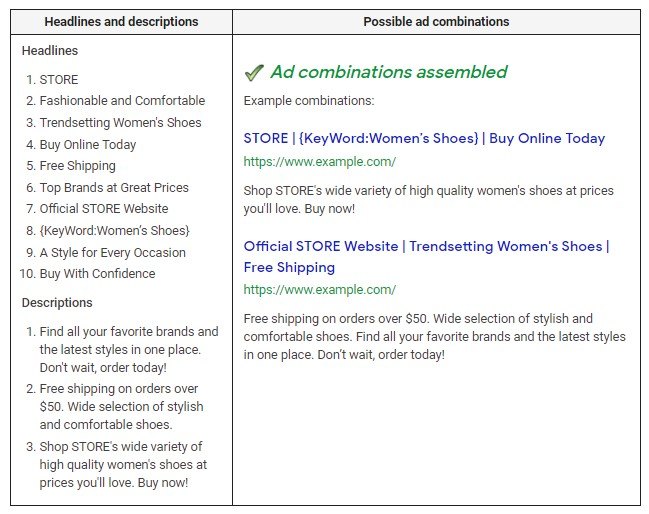
Whereas the bad example, every headline variation includes the keyword. Since there will always be at least two headlines shown (three in this case), this results in a lot of repetitive text in the final ad:
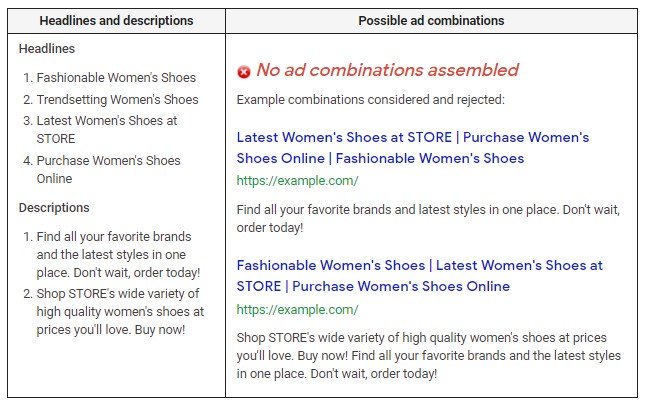
Additionally, only four different headlines were created. Google recommends at least five so that it has more to select from and test.
Pinning headlines and descriptions
For some companies, showing prospects a specific message is mandatory, but this doesn’t always overlap with the results of the highest performing ads. So what happens when automation decides that the ad you want to run doesn’t cut it?
Fortunately, Google provides advertisers the option to “pin” headlines or descriptions that you require in your ads. This feature is quite important for large companies who are concerned with staying consistent with their branding.
Device and ad extension availability
Like their predecessors, the new responsive search ads are available both on desktop and mobile. Also, they’re eligible with any of your ad extensions. So when you combine machine learning with expanded text ads and ad extensions — you’re sure to have a highly-persuasive ad that gets people to click-through and learn about your offer.
The ad format is flexible and looks good on both small and large devices (as the ad type resizes by adding or removing additional headlines and descriptions). However, on some smaller devices, fewer headlines and/or descriptions may be shown to fit the screen size.
When can responsive search ads be used?
These new ads are still in beta and are only available to certain accounts.
To find out whether you’re eligible or not, login to your Google Ads account and create a new ad. If there is no option to create a responsive ad, contact the Google Support team to see if the functionality can be enabled within your account. If not, you will have to wait until the ad type is released to all advertisers, likely in the next few months.
As far as cost, there has been no indication of any additional costs for using responsive search ads. Pricing will still be on a per bid basis.
The future of responsive ads and your ad campaigns
To sum up, Google responsive search ads have enabled advertisers to cut their workload and save money by reducing the time needed to test and manage ad variations.
A/B testing is not needed for these types of ads, as automation does all the testing. Therefore, you no longer have to create a series of different ads to test, track performance, and manually choose the best performing ads.
Time will tell how effective Google responsive ads will be, but the outlook is positive and it will be interesting to see how advertisers take advantage of them.
For a detailed view of some of the major ad platforms (Facebook, Google, YouTube, etc.), check out the Instapage digital advertising reference guide. The free guide covers all of that plus the ad specs for each ad type available.
